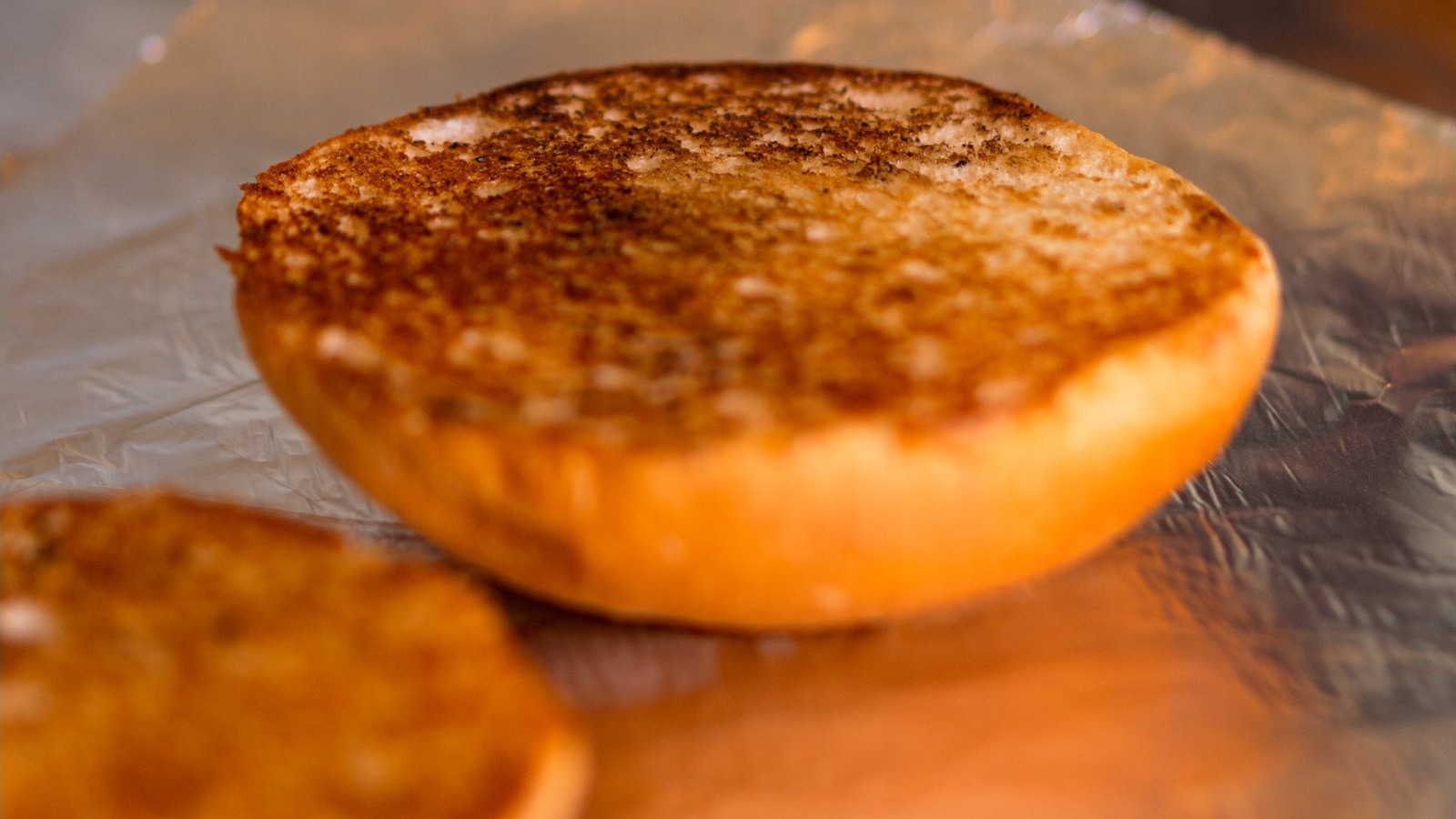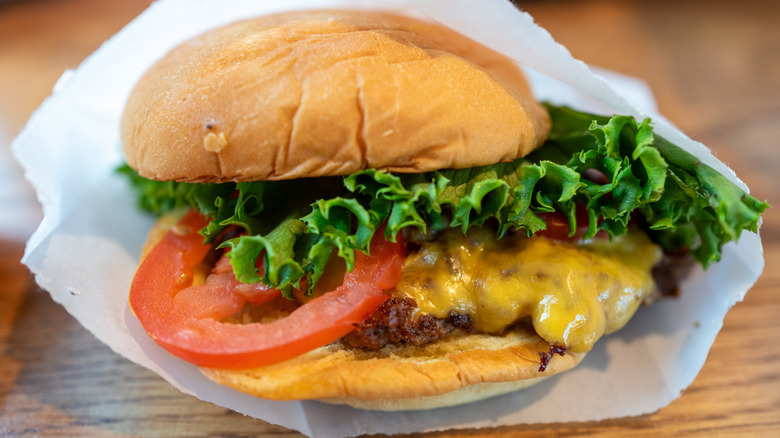There are days you just want to get a burger on the table with minimal effort. Throw the meat in a pan, slap some ketchup on a bun, and scarf it down. But when you’re taking the time to grill the perfect burger at the best temperature, and getting just the right number of toppings, how you treat the bun becomes significantly more important. Clearly the bun should be as fresh as possible, and, if it’s a store-bought hamburger bun, the best one you can get. But what about toasting them? Does it enhance the bun or dry it out, add flavor or detract? It can’t really be necessary to toast it every time. Chowhound turned to John Karangis, Shake Shack’s executive chef and VP of culinary innovation, for exclusive advice on this conundrum.
Karangis has been with the NYC-based burger chain Shake Shack since 2018, and spends a lot of time with the brand’s iconic potato buns, provided by Martin’s Famous Potato Rolls. Buns are pressed against a rotating drum coated with melted butter, then laid into a sort of toaster oven. Only the bun’s interiors are toasted golden brown. “We toast our potato buns at Shake Shack with butter to enhance texture and flavor,” he notes. This should create a slight variation in texture between the toasty interior of the bun to its softer exterior.
When toasting a bun works and how it helps
The primary reason for toasting hamburger buns is for the enhanced taste. Just like a perfect, crispy grilled cheese sandwich, the buttered, toasted bun adds a nutty warmth to the bread with hints of caramel and roasted grain. But there are other benefits gained from a bun toasted in oil or butter. If you forgot to pick up a fresh pack, searing could help revive stale buns and improve both their texture and aroma. In addition, toasting helps firm up the interior surface, avoiding the hazards of soggy buns.
“It also holds up against juicy burgers,” says John Karangis. And he’s not just talking about the grease and juices from the meat. A crisp, toasted or grilled bun prevents ketchup, barbecue sauce, or extra-juicy tomatoes from soaking through, risking total collapse of the burger. Whether you pop buns into a toaster or toaster oven, flat onto a frying pan, or onto the grill, leaving attractive grill marks, toasting generally improves the burger experience.
Other times, toasting the bun isn’t necessary, such as when you’re serving up pulled pork. In that instance, you can actually enjoy the texture of a juicy, soaked-through bread bun. Even Karangis finds toasting isn’t always necessary. “While not all buns need to be toasted, it works best for softer buns like potato or brioche, bringing out their flavor and structure without overpowering the burger,” he says.





